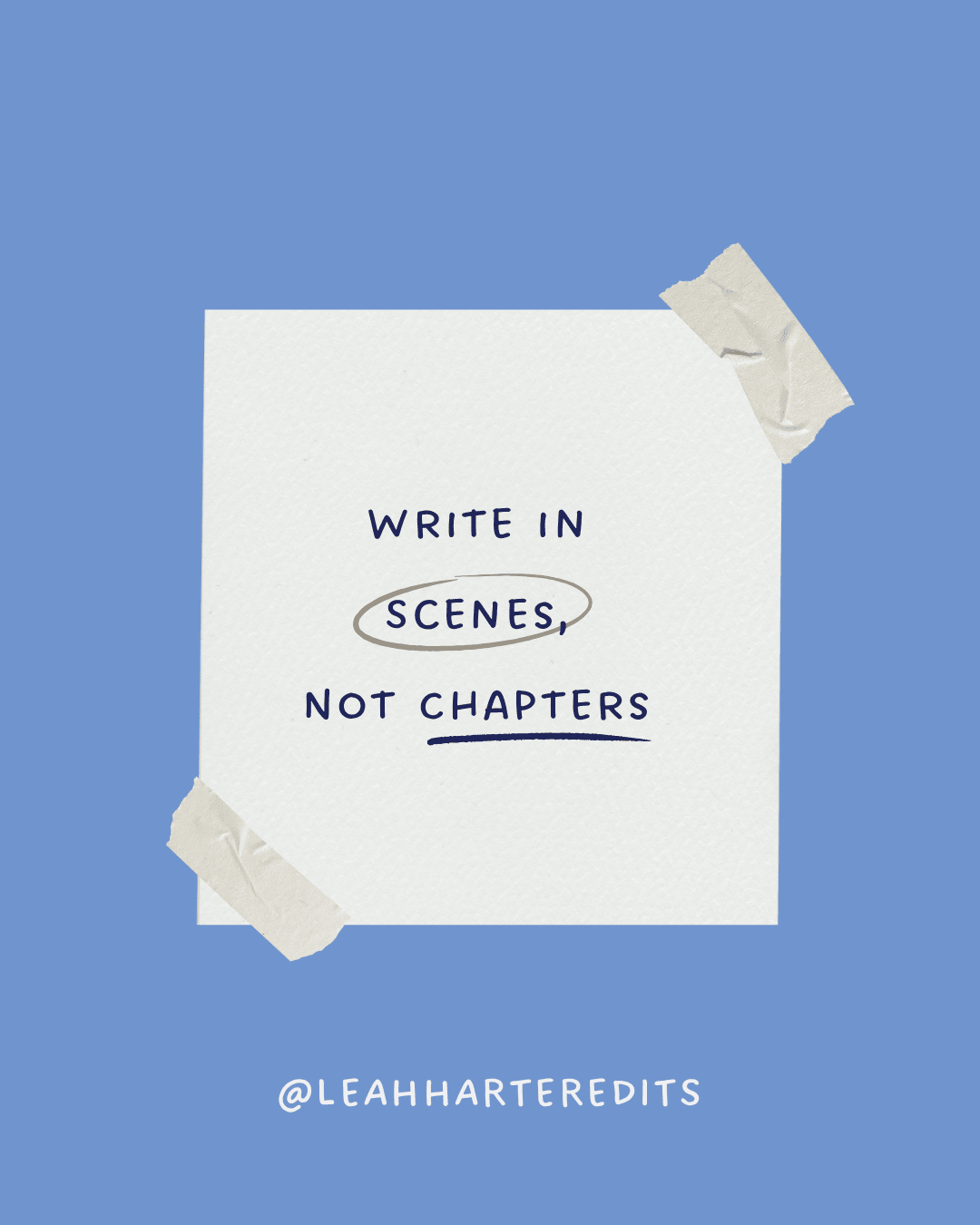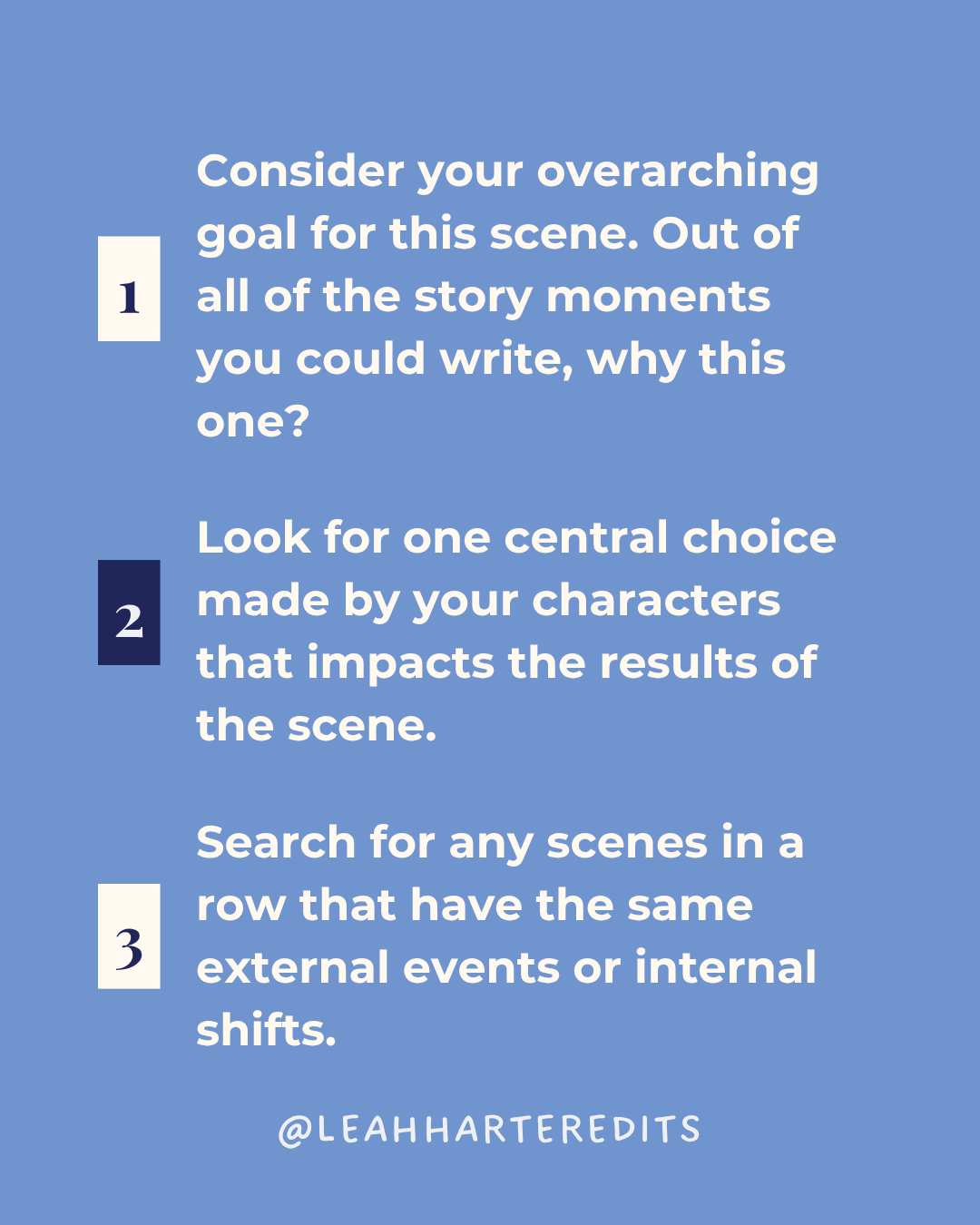How to Write a Scene in a Novel
Stories are built at the scene level. Compelling scenes move the story forward by creating an incremental arc of change. By the end of a scene, something has changed in your story—whether that be externally in the plot or internally in your character development. Every scene needs to change something for your characters or their world in order to hook readers.
Scenes are a fundamental unit of a fiction story. Scenes build the global conflict by steadily increasing the stakes.
A strong scene can convince your reader to keep flipping the page by keeping them engaged and interested in what happens next. If you can learn to write a good scene, you can keep readers curious about what happens in your story.
In this blog article, you'll learn how to write an effective scene by examining the structure of a scene, learning about the fundamental units of fiction, and giving your reader a surprising yet inevitable ending.
What is scene structure?
There is no such thing as perfect scene writing advice, but the Story Grid Method comes pretty close. They teach a philosophy based on your characters' goals, an external disruption, and a key choice by focusing on five key elements, or the Five Commandments. Each unit of story (Global, Act, Sequence, Scene and Beat) should have all Five Commandments.
Before breaking down the Five Commandments, I want to give you an idea of how I use this writing advice. In addition to considering the Five Commandments, I also examine two goal areas that provide important context when making sense of the structure of the scene.
Here is the method I use to edit scene structure:
1. Initial Goal – Your scene starts with your Protagonist or Point of View Character's goal. This can be as simple as getting breakfast or as complicated as taking over the world.
2. First Commandment: Inciting Incident – An external force disrupts your character’s goal. This can either be a coincidence or intentional. This external force causes your protagonist to form a new goal.
3. New Goal: Object of Desire – This is your character’s new goal based on the inciting incident. If they still have the same goal as the beginning of the scene, then they must want this goal in a new way.
4. Second Commandment: Turning Point – Character is presented with an equally weighed choice.
5. Third Commandment: Crisis Question – The choice your character must make. This can either be a Best Bad Choice (character wants neither, but must choose one) or Irreconcilable Good Choice (character wants both, but must choose one). This must truly be a choice. It doesn’t work if your character clearly wants to choose one option over the other.
6. Fourth Commandment: Climax – The choice your character makes. This can either be an action or a reveal. When your character makes a choice, it tells us who they are as a person and what they value. Climatic moment
7. Fifth Commandment: Resolution – This is the result of your character’s choice. Some choices have positive outcomes and some have negative. Vary this throughout your novel to create an interesting dynamic.
Every Scene Needs...
The opening of a scene is a critical opportunity to immediately engage the reader. Every time you start a new scene, I recommend including these three areas in the first three sentences.
Hook - A hook is anything that inspires a question that keeps the reader searching for answers.
Grounding - This is the description that orients the reader in the physical and time space of the scene. Grounding provides the reader with a sense of the present story moment by specifying the setting and the duration since the last scene's conclusion.
Point of View (POV) - Your POV character is the vehicle that your reader uses to transit the scene. Establishing early whose perspective they are in ensures that your writing in clearly understood.
Starting scenes with these three ingredients ensures your reader is curious, is prepared with context to understand the scene, and that they are clearly envisioning themselves in relation to the characters.
Write a Scene that Hooks Readers
It's not just great writing that catches your reader's attention. The scenes in your novel are the key to driving your story forward. I like to think of these like cells in the body. Each scene serves a specific purpose that supports the overarching structure of your manuscript without which your narrative falls apart.
The events of your scenes must matter to the outcome of your story. When considering your reader, I want you to imagine them thinking this question over and over again, "Why does this matter?" Your audience is constantly on the hunt for the specific meaning created by the current story moment. If nothing changes at the scene level, then your reader will be confused about the importance of individual plot points or grow bored with the narrative.
Write Scenes not Chapters
Scenes are the basic building blocks of story. When writing fiction, most new authors start by writing chapters. This is a logical first step since books are broken up into chapters. However, when reading your book, chapters serve only the purpose of convincing your reader to start the next chapter. They are a final touch, not a component of story structure.
Instead, I guide all my writers to write in scenes, not chapters. The average scene length in commercial fiction writing is between 1500 and 2000 words, though some will be longer or shorter. This means that if you are writing a 100,000-word novel, you can aim to have between 50 to 66 scenes in your book. Breaking your novel down into these individuals
Tips for Writing a Great Scene
Let's talk about what you should do when writing a scene.
First, consider your overarching goal for this scene. In other words, out of all of the story moments you could write, why this one? What would you like to change for your protagonist as a result of this story moment? Is that change internal or external? Does the scene start on a positive note and end on a negative one? Or is it the opposite?
Next, look for one central choice made by your characters that impacts the results of the scene. Decisions are the heart of any good scene as they shape the arc of change.
Lastly, look for any scenes in a row that have the same external events or internal shifts. Each scene should change something permanently in your story. If your character is repeating the same choice over and over again, your reader will find the story repetitive and lose interest.
That’s all for now! For more writing tips and tricks, feel free to reach out to me or learn more on my Instagram below:





